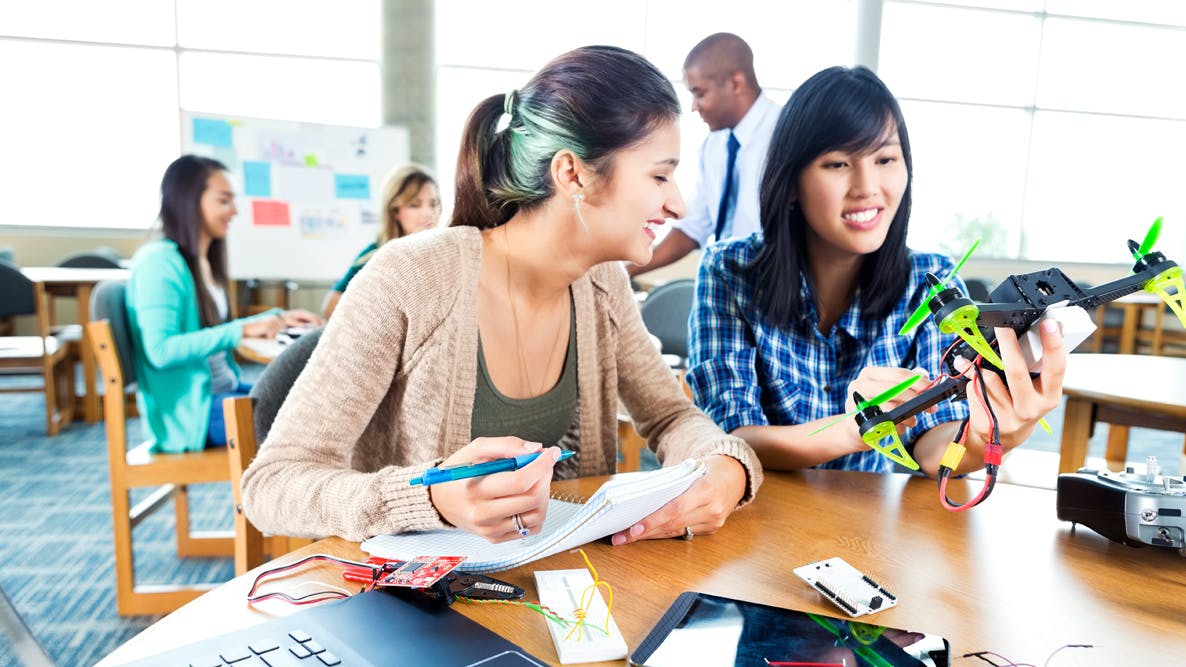The Future of Engineering
Educating tomorrow's engineers will take more focus on teaching creativity, inclusivity, hands-on and team learning without losing site of the fundamentals.
The Future of Engineering
Recently, I was asked by the University of Wisconsin to share my thoughts on the future of engineering education as the keynote speaker at their 2016 Engineering Innovation Showcase.
By teaching at the UW and through our design practice, I’ve developed a pretty good perspective on what makes young engineers successful – or not – early in their careers and how that might map back to aspects of their education. But the chance to formulate those ideas into a cogent speech – and present it to a group of academic leaders – was both an honor and a bit terrifying.
In preparing for the speech, I did some research into the history of the modern engineering education from its origins at Echole Polytechnique in France in the 1790s through the U.S. Land Grant universities, the rise of complex mathematics and Cold War research. I found many things that haven’t changed; the tension in engineering education between hands-on and analytical and the balance between scientific research and practical application seem to consistently loom over the pedagogy regardless of the time. Although it’s tempting to claim that the problems facing young engineers are more dire – and opportunities broader than ever before – a careful study of this history reveals this probably isn’t the case. To claim both is disingenuous and somewhat naïve, and perhaps misses the lessons a glimpse at the past can teach us.
I don’t mean in any way to downplay today’s problems, which are indeed deeply complicated and troubling. Neither am I a pessimist. The potential and opportunities facing today’s graduating engineers are broad and inspiring. But a study of the history of engineering education reveals that engineering has ALWAYS reflected and influenced the challenges and opportunities of the day. This is true from mechanization in the industrial revolution, transportation and infrastructure during the intra-war period, atomic energy and weapons during the Cold War, power and energy in the 1970s, to computing in the Information Age.
So if these things haven’t changed – what has? Well, in the first place, engineering education is a whole lot more expensive these days. At the turn of the former century, in-state tuition was free! Beyond that you find:
- Highly integrated problems and systems that cross conventional disciplines with unprecedented complexity.
- Frictionless global commerce including worldwide resource allocation, competition and opportunities.
- Radically differing levels of early exposure and acumen for incoming students.
- New modalities and outlets for gathering, learning and disseminating information.
- An unprecedented speed and pace of innovation
So fundamentally, while the basic underpinnings of engineering education remain familiar, the environment and context within which engineers will need to practice reflects challenges and opportunities that are unique to today. Challenges and opportunities that like all periods range from the mundane to the truly wicked.
So what do I think we need to do to prepare today’s engineering students to address the unique and relevant challenges of today?
I’d like to suggest eight areas for focus –ways in which our courses, curriculum, tools and methods need to be influenced. These are:
- Teach the ability to conceptualize concrete solutions to abstract problems.
- Engage and connect through team, project and goal-based learning.
- Increase awareness, exposure and empathy with other disciplines and perspectives.
- Reinvigorate hands-on learning.
- Teach our engineers to become storytellers.
- Erode boundaries and blend between traditional engineering disciplines.
- Inform and educate the ethical humanist engineer.
- Empower engineers as entrepreneurs.
All the while we also need to maintain a focus on technical and analytical excellence…
I get it – this is really hard. And I don’t have all the answers on how to do this. But there has been lots of exciting progress made as the Engineering Showcase highlighted. We know that online and individualized learning can increasingly carry the load for rote skills, leaving classroom time for deeper problem solving, core research and application. We know our students are increasingly coming in with deeper and more relevant skills. Technology is providing solutions to analysis and meaning our students need to understand core principles and theory while releasing them from some of the laborious application.
We know we can remove duplication of material across engineering and science courses.
Finally, we need to have the courage to reconsider some of our sacred cows in the light of new context and challenges.
Although it’s a cliché, we know that change is the only constant. As knowledge and society progresses, the context changes and our education must change as well. Engineering has and always will shift its focus between applied and theoretical, hands-on and analytical to meet the needs of the day.
Today’s problems are unique.
Today’s opportunities are inspiring.
We need to lift our minds and have the creativity, intellect and courage to find ways to tailor our education processes to prepare our students to meet those needs and take advantage of those opportunities.
To watch a video of my presentation, please click on the photo below. Click here to download the PowerPoint on SlideShare.
